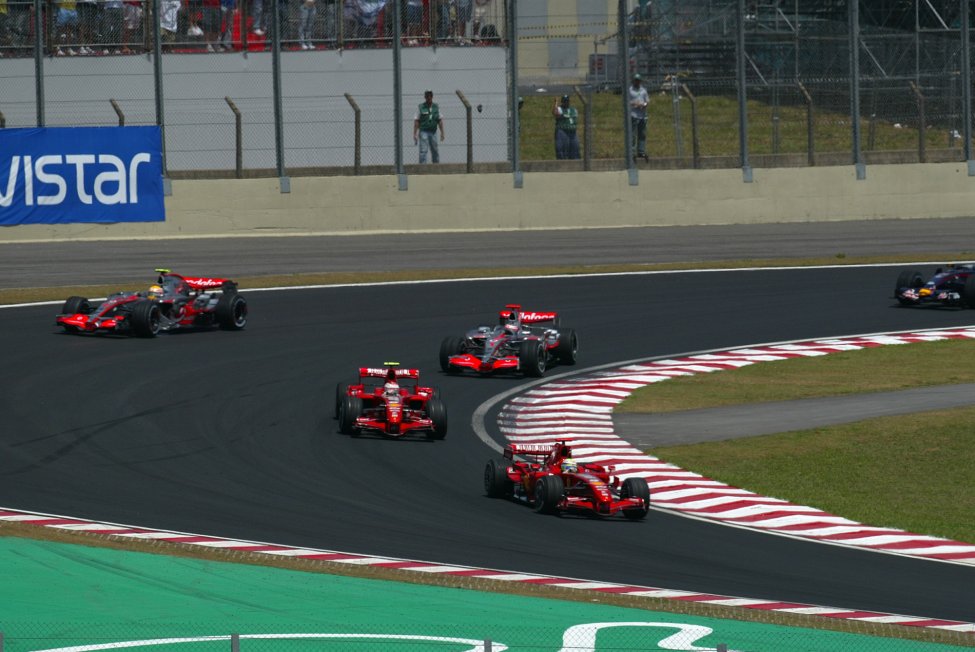
Lewis Hamilton may be a seven-time World Champion – but there are three ‘lost’ titles during his career that should have made him a 10-time champion.
The 2021 Abu Dhabi Grand Prix will forever be etched in memory for determining the championship outcome and Lewis Hamilton’s miss on clinching a record-breaking eighth World Championship.
However, what if Hamilton had already secured ten championships before that crucial night at Yas Marina?
Indeed, setting aside Abu Dhabi, Hamilton’s track record includes three lost World Championships due to mechanical issues and an overlooked accident. These instances, had they played out differently, would have nullified the significance of the Abu Dhabi race.
Additionally, one might consider adding 2012 to the list, given that despite McLaren possessing the fastest car, repeated operational and reliability issues hindered Hamilton’s chances to challenge Sebastian Vettel and Fernando Alonso in what marked his final year with McLaren before transitioning to Mercedes in 2013.
2007
Hamilton made a bold entry into his F1 career, demonstrating his skills early on by maneuvering his McLaren around Alonso at Turn 1 during his debut race in Australia. It was a statement move, challenging the World Champion and the significance of the #1 sticker on his car.
Throughout that season, tensions simmered between the two drivers. The Hungarian GP qualifying became a pivotal moment, escalating a conflict that had been building since Monaco. Back then, Hamilton was essentially instructed to hold his position behind Alonso – a directive known as multi-12.
Before the penultimate race, McLaren faced penalties, losing $100 million and their Constructors’ title due to Spygate. However, amidst a three-way title battle, Bernie Ecclestone, taking on a reconciliatory role, persuaded Max Mosley not to disqualify either Hamilton or Alonso from the Drivers’ Championship.
Heading into China, Hamilton led with 107 points, followed by Alonso with 95 and Kimi Raikkonen with 90. In those days when a win was worth 10 points, Raikkonen had to bridge a 17-point gap with only 20 points available.
Hamilton’s straightforward path to the title required finishing just one point behind Alonso and six behind Raikkonen. However, McLaren’s internal strife, particularly against Alonso, led them to keep Hamilton out on worn intermediates for too long. This strategy backfired as Hamilton slid into a gravel trap upon finally pitting, enabling Raikkonen to secure a crucial victory.
The standings were now Hamilton 107, Alonso 103, and Raikkonen 100 heading into Brazil. Early challenges and gearbox issues pushed Hamilton down the grid, necessitating a recovery drive amid high tire degradation. To secure the title with Raikkonen winning, Hamilton needed a fifth-place finish but could only manage a distant seventh as Raikkonen opportunistically overtook teammate Felipe Massa during the final pit stops.
By a mere point, Raikkonen emerged as the victor, leaving Hamilton hinting at undisclosed political matters behind the scenes. Hamilton suggested he’s aware of the situation but is unable to elaborate, as his dreams of becoming a rookie World Champion fell apart.

2010
This championship, somewhat overlooked, slipped away from Hamilton due to a critical incident during the Spanish Grand Prix. With just two laps remaining and holding the second position behind Mark Webber, Hamilton experienced a tire rim failure that caused him to crash into the Turn 3 barrier. This mishap cost him 18 crucial points and inadvertently granted an additional three points each to Vettel and Alonso.
When reviewing the final standings after the intense competition in Abu Dhabi, Hamilton concluded with 240 points, trailing champion Vettel by 16 points, as depicted in the tables below.
Had those 18 lost points been added to Hamilton’s tally, and if Vettel hadn’t gained the three bonus points in Barcelona, the championship outcome would have favored Hamilton by a margin of five points.
Considering a hypothetical win in 2007, coupled with this potential victory in 2010, Hamilton would have secured his third title within four years of his F1 career.

2016
Much of the discussion surrounding Hamilton’s missed opportunity to win the 2016 title revolves around the engine failure he experienced while leading in Malaysia, one of several similar incidents he faced that year.
However, that incident wasn’t the decisive factor. It was Hamilton’s repeated struggle with poor starts from pole position that ultimately cost him the championship.
On multiple occasions in Australia, Bahrain, Spain, and Italy, Hamilton secured pole position but failed to convert them into wins. The most notable incident was his crash with teammate Nico Rosberg in Spain. In Australia and Monza, Hamilton finished second to Rosberg, resulting in a swing of 14 points each time. Additionally, his third-place finish in Bahrain led to a 20-point advantage for Rosberg.
The challenging weekend in Azerbaijan further contributed to Hamilton’s setback, witnessing a 30-point swing as Rosberg claimed victory while engine setting issues limited Hamilton to fifth place.
Ultimately, Rosberg clinched the title with a mere five-point margin. His subsequent retirement after winning the championship prevented Hamilton from reclaiming the title from him. This act could be seen as the ultimate show of confidence or assertion, leaving Hamilton unable to challenge Rosberg for the title again.

Leave a Reply